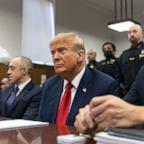Q&A: The highs and lows of filming Disney's 'Earth'
— -- Mickey Mouse has some major real-life competition in Disney's new movie Earth, a feature-length, G-rated documentary opening today that traces the journey of three animal families across the globe. Co-director Alastair Fothergill flips through his passport and shares some of the highs and lows of the epic project with USA TODAY's Laura Bly.
Q. Tell us about the genesis of the movie and how it differs from the BBC series Planet Earth, which supplied about 60% of the footage.
A. We had the movie commissioned at the same time as the television series, so we were able to work on both projects in parallel. From the very beginning, we had a separate script and plan for the movie, (which) was going to tell this extraordinary story of the sun and its seasonal influence on the planet through the eyes of three key characters: the polar bears in the north, the elephants in the tropics and the humpback whales taking us from the tropics to Antarctica to complete the journey.
Q. You filmed in more than 200 locations in 64 countries. Which was the toughest logistically?
A. Antarctica was a very demanding place to work, because if you want to film the Southern lights and over-wintering penguins, you have to stay there for the winter. We had one team there for 10 months, facing temperatures down to (minus 94 degrees Fahrenheit), which is very, very tricky. But the big challenge of the series was the enormous range. We literally did film from pole to pole, from the top of Everest all the way to the depths of the rainforest with 100% humidity. Every habitat provided specific challenges.
Q. Which sequence was the most dangerous to film?
A. Probably the lions and elephants (at a watering hole in Botswana's Kalahari Desert). That was filmed in complete darkness, and we were using infrared lights because normal lights would have disturbed the behavior of the animals. There were 30 or 40 lions walking around, but amazingly lions don't seem to associate people in vehicles with food. What was really dangerous was that the female elephants were trying to protect their calves. The only ones that could see anything were the lions, who have pretty good night vision, and our camerawoman. These elephants were running around like crazy, and could easily have crashed through our vehicle.




